Ancestry Mark |
Home > Benefits > Ancestry Mark |
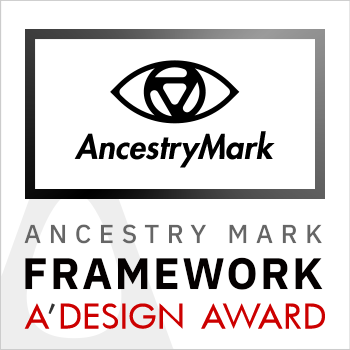 Ancestry Mark Affidavit Certification Program
Ancestry Mark Affidavit Certification Program
Ancestry Mark is an affidavit certification program that empowers creators to legally attest the authenticity of their creations through a structured evaluation process. The innovative Ancestry Mark certification is designed to authenticate the affidavits provided by creators, in which the creators affirm the originality and authenticity of their work. Within the context of an era influenced heavily by generative AI technologies, the core objective of the Ancestry Mark is to distinguish authentic creations that are the result of sentient creativity from creations that do not involve sentient involvement. The Ancestry Mark publicly and legally records the creator's statements regarding their work, covering aspects such as idea origination, creative decision-making, direct involvement in the creation, and the use or non-use of generative AI tools, alongside inquiries into the authenticity and originality of creations.
Ancestry Mark Application
The Ancestry Mark certification journey begins with creators uploading their design along with relevant images and textual descriptions of their work. Following this initial submission, creators proceed to answer a detailed questionnaire, starting with yes/no questions to articulate the eventual role of AI and their own creative involvement in their work. This is succeeded by the completion of open-ended questions that further delve into the creative process. Upon completing the questionnaire, creators can download an affidavit document that encapsulates their declarations—responses from the yes/no questions, alongside the provided project details and answers to the open-ended questions. Creators are then required to sign the Ancestry Mark affidavit in a physical manner, affirming the truthfulness of their statements, and upload the signed document for review. The review process ensures that the signed affidavit is in proper order, verifies the consistency between the affidavit's declarations and the initial application responses, and assesses the alignment of open-ended question responses with the yes/no answers. Successful certification, contingent upon meeting the program's criteria through this process, awards creators with either the Ancestry Mark or the Ancestry Mark Gold Seal, symbolizing their pledge to authenticity and original sentient creation.
Get Started Now
Start your Ancestry Mark Application:
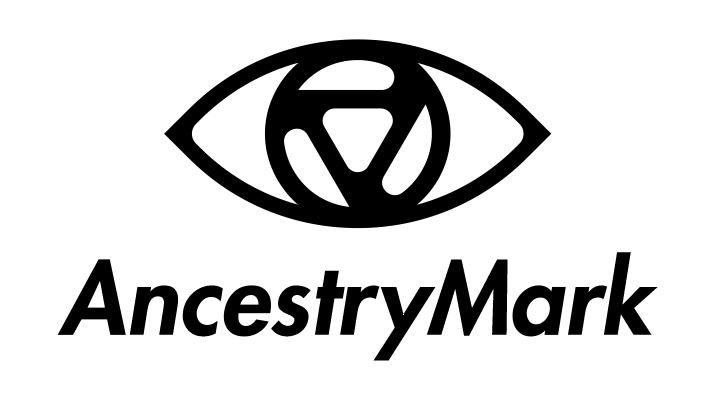
When a work is granted the Ancestry Mark Standard, it signifies that the creator's legal affidavit, attesting to their creative process and the use of AI, meets the Ancestry Mark Affidavit Certification Program criteria. This status means that the creator has successfully made legally binding declarations regarding the authenticity and originality of their work, and these declarations have been assessed and recorded according to the Ancestry Mark's standards. Having an Ancestry Mark granted for a work means that the creator of the work has provided a legal affidavit declaring their direct, sentient involvement in the creative process, and this affidavit has met the Ancestry Mark’s criteria. It indicates that the work, according to the creator's legal statements, is not completely AI-generated without sentient involvement, and has been created with significant sentient creativity and decision-making. Ancestry Mark highlights that the work embodies genuine creative effort and intellectual contribution from the creator. Ancestry Mark communicates that the work is a conscious creation, with creator having agency and control in creation.
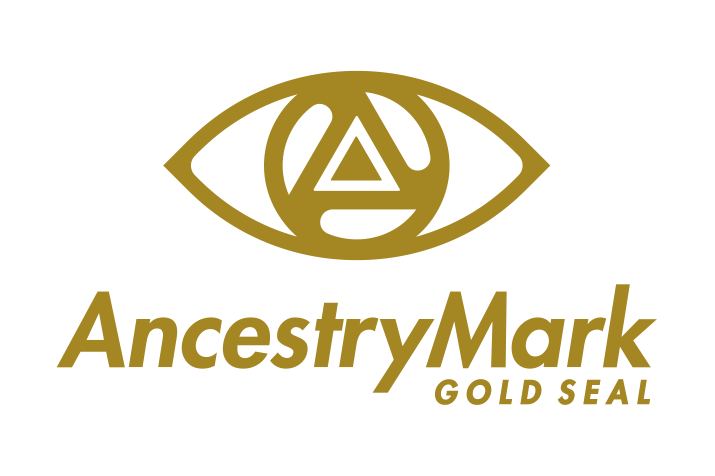
When a work has been granted the Ancestry Mark Gold Seal, it indicates that the creator's legal affidavit states that the work was created entirely without the use of AI-generated content or tools, and this declaration has been assessed and recorded according to the Ancestry Mark's rigorous standards. The Gold Seal is a special designation within the Ancestry Mark program that recognizes works for which creators have made legally binding declarations of no AI involvement in their creative process. Ancestry Mark communicates that the work is a fully conscious creation, with creator having complete agency and creative control in creation.
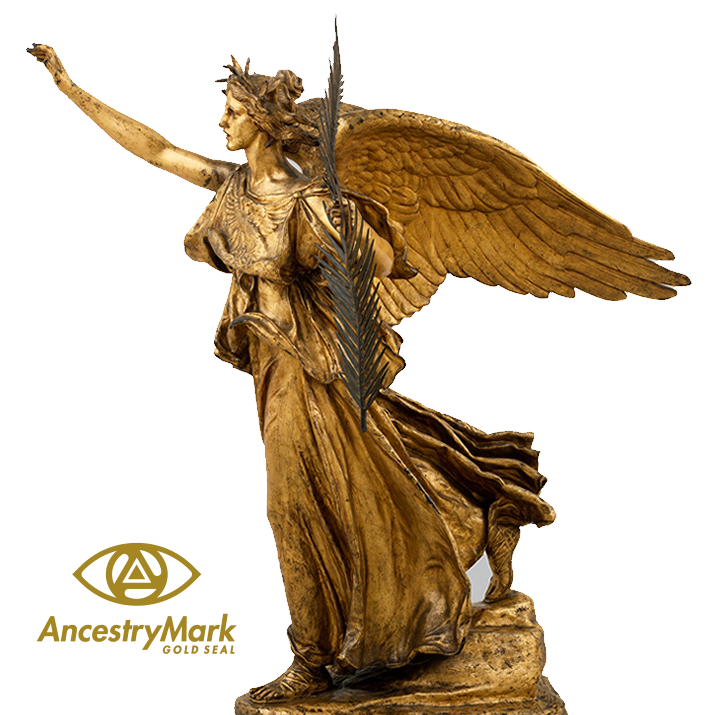

How it Works?
Designers, artists, architects, and creators can obtain the Ancestry Mark through a structured certification process that validates their creative works as original and authentic. Here's a simplified overview of how to apply for and receive the Ancestry Mark:
- Establishing a Creator Profile:
Creators initiate their journey with the Ancestry Mark by setting up a comprehensive profile on the A' Design Awards platform. This profile encompasses essential personal and professional information, serving as a foundation for their engagement with the program. [Create an Account Here (Free)]
- Submission of Design:
Following profile creation, creators submit their design by uploading images and textual descriptions. This step showcases the design's aesthetic, functional qualities, and the conceptual narrative behind the work, providing insights into its innovative aspects. [Upload Design Here (Free)]
- Preliminary Assessment:
After design submission, creators undergo a preliminary assessment via a yes/no questionnaire. This assessment evaluates the creator's direct involvement and creative intent, ensuring the work adheres to the Ancestry Mark's originality standards. [Start Ancestry Mark Application for Uploaded Design Here (Free for A' Design Award Winners, Requires Ancestry Mark Credits for Non-Winners)]
- Submission of an Affidavit:
Post questionnaire, creators submit an affidavit—a formal declaration affirming their work's origin from their creative process, with technology as an enhancement rather than a replacement. The Ancestry Mark affidavit attests that the work is original and not primarily generated by non-sentient AI.
- Detailed Review and Peer Verification:
Designs that meet preliminary criteria proceed to a detailed review, potentially involving peer evaluation. This stage scrutinizes the affidavit's claims, the work's originality, and its alignment with creativity and authenticity principles.
- Authentication Tools and Certification:
Successful review culminates in Ancestry Mark certification, where creators receive a unique QR code and digital logomark. The QR code directs to a page detailing the creator's affidavit and work, simplifying authenticity verification for end-users.
- Utilization of the Ancestry Mark:
Certified creators are empowered to use the Ancestry Mark alongside their work on various platforms, signaling the verified originality and authenticity of their creations to audiences.
- Ongoing Support and Resources:
The Ancestry Mark program offers continuous support, resources, and guidelines to help creators maintain their certification's integrity and effectively showcase the value of their certified works.

Deliverables
For certified affidavits, the Ancestry Mark program provides several key deliverables designed to affirm the authenticity of the creators' declarations on their creative process and facilitate verification by audiences. These deliverables include but not limited to:
-
Ancestry Mark Logomark:
A digital logo that certified creators can display alongside their work. The Ancestry Mark logomark serves as a visual symbol of the work's authenticity and the creator's adherence to the principles of originality as recognized by the Ancestry Mark. -
Unique QR Code:
A unique QR code linked to a dedicated page that provides detailed information about the certified work. This page includes the creator's affidavit, an image or description of the work, and any additional details that verify its authenticity. The QR code allows easy access for anyone interested in verifying the work's origins and the authenticity of the Ancestry Mark certification. -
Legal License to Use the Ancestry Mark:
A formal license that grants the creator the right to use the Ancestry Mark in association with their certified work. The Ancestry Mark license outlines how the mark can be used across various mediums and platforms, ensuring that the integrity of the Ancestry Mark is maintained. -
Certification Document:
A formal certificate that acknowledges the successful certification of the work under the Ancestry Mark program. This document can be used by the creator for promotional purposes or kept for personal records. -
Guidelines for Use:
Detailed guidelines on how to effectively use the Ancestry Mark and the QR code for promotional and verification purposes. These guidelines help creators maximize the value of their certification and ensure that the mark's significance is clearly communicated to audiences, includes Metadata Integration Information. -
Access to Verification Tools:
Tools or services that enable the creator and end-users to verify the authenticity of the certified work. The Ancestry Mark services include digital platforms, apps, or websites designed to facilitate easy verification of the Ancestry Mark and the information encoded within the QR code. - Listing and Promotion:
Subject to a further license and declaration, creators could request their creations which have been granted the Ancestry Mark Standard or the Ancestry Mark Gold Seal to have their works promoted in Ancestry Mark Directory and A' Design Award network.
- Ancestry Mark Matrix:
This special deliverable brings together the Ancestry Mark Standard or Ancestry Mark Gold Seal, whichever was granted, together with Unique QR Code containing Ancestry Mark ID, URI and URL. Scanning the QR Code, a verification page is accessible to verify the validity of the Ancestry Mark.
These deliverables are designed to provide creators with a comprehensive suite of tools and resources to highlight the authenticity of their work and engage with their audience confidently. By offering a clear, verifiable sign of creator's affidavit on the authenticity of their works, the Ancestry Mark program helps creators differentiate their work in a crowded market and helps audiences appreciate the genuine creativity behind certified works. Once creators obtain the Ancestry Mark, we guide them on how to leverage this achievement can maximize its value, with a comprehensive guide and toolkit on best practices for using the Ancestry Mark in marketing materials, online portfolios, and social media to enhance visibility and credibility.

Get Started Now
You can start your Ancestry Mark Application is within three steps.
- Create an Account Here or Login Here
It is free to sign-up for an account.
- Upload Design Here or Request the Mark for Awarded Design
It is free to upload your design and get a preliminary score.
- Start Ancestry Mark Application for Uploaded Design Here
Ancestry Mark application is free for A' Design Award Winners, Requires Ancestry Mark Credits for Non-Winners.

Ancestry Mark Verification Status
When the verification code is provided, the Ancestry Mark will display one of the three status. The Not Valid status is shown when the ID number is not valid or if the Ancestry Mark has been revoked or withdrawn for any reason. If the Ancestry Mark is valid, one of the two is shown: Ancestry Mark Standard (compliant with Ancestry Mark Criteria), and Ancestry Mark Gold Seal (compliant with Ancestry Mark Criteria for works that do not make use of any AI generated tools or content within the design)
| Not Valid | Ancestry Mark Standard | Ancestry Mark Gold Seal |
| Ancestry Mark is Not Valid | Ancestry Mark is Valid | Prime Mark is Valid |
In addition to the Ancestry Mark verification status, you will have access to (a) the image of the work so that you could make a visual verification, (b) responses to Ancestry Mark Questionnaire, (c) responses to Ancestry Mark Open-Ended Questions. - These details provide you with a heuristic view of the affidavit certification.

How Much it Costs?
The Ancestry Mark certification represents a meaningful investment in validating the authenticity of creative works amidst the rise of AI. Creators should anticipate a one-time fee for each submission, designed to cover the certification's comprehensive review process. Additionally, preparing for submission, including organizing visuals and completing questionnaires, demands about 1 hour of time investment. In recognition of our laureates' efforts to create impactful designs that contribute to making the world a better place, the Ancestry Mark application fee is waived for A' Design Award winning works as part of the A' Design Prize. This gesture is exclusively for the awarded designs, honoring their achievement and cannot be transferred to other projects. For further Ancestry Mark certifications, laureates can claim this privilege using their Prestige Tokens, allowing them to certify additional works beyond their awarded designs.
| Package Name |
Number of Credits |
Cost for Non-Winners | Cost for A' Design Award Winner Laureates |
| Artifact Initiate the process of affirming the authenticity of your creation with a single Ancestry Mark Review Credit. This entry-level package allows creators to begin the certification of their affidavits, a vital step in legally attesting to the sentient involvement in their creative process. Ideal for individuals taking their first step towards certifying their commitment to authentic creation in the digital era. |
1 Credit | 149 € | Free for the award-winning work |
| Provenance Enhance the visibility of your creative authenticity with two Ancestry Mark Review Credits. This package supports creators in the journey of legally documenting the sentient origin of their works, reinforcing the transparency and integrity behind their creative expressions. Suitable for creators who seek to affirm the authenticity of a pair of creations. |
2 Credits | 199 € | Can be obtained using Prestige Tokens |
| Legacy Establish your dedication to genuine creativity with five Ancestry Mark Review Credits. Each credit contributes to the certification of your affidavits, underlining your engagement and direct involvement in the creative process. This package is designed for creators who are ready to make a significant impact on the landscape of authentic creation. |
5 Credits | 399 € | Can be obtained using Prestige Tokens |
| Heritage Commit to a comprehensive certification journey with twenty-five Ancestry Mark Review Credits. This expansive package allows for a broad range of your creations to be certified, celebrating the sentient creativity and authenticity behind your portfolio. It is the ultimate choice for prolific creators or institutions dedicated to establishing a legacy of genuine, sentient-driven creativity. |
25 Credits | 999 € | Can be obtained using Prestige Tokens |
Each of these packages represents a step towards legally attesting and certifying the creators' affidavits about their creative processes and the involvement of AI, if any. The Ancestry Mark serves as a testament to the creators' honest and transparent declaration of their work's origins, emphasizing the significance of sentient creativity in an age where the role of AI in creative endeavors is ever-increasing.
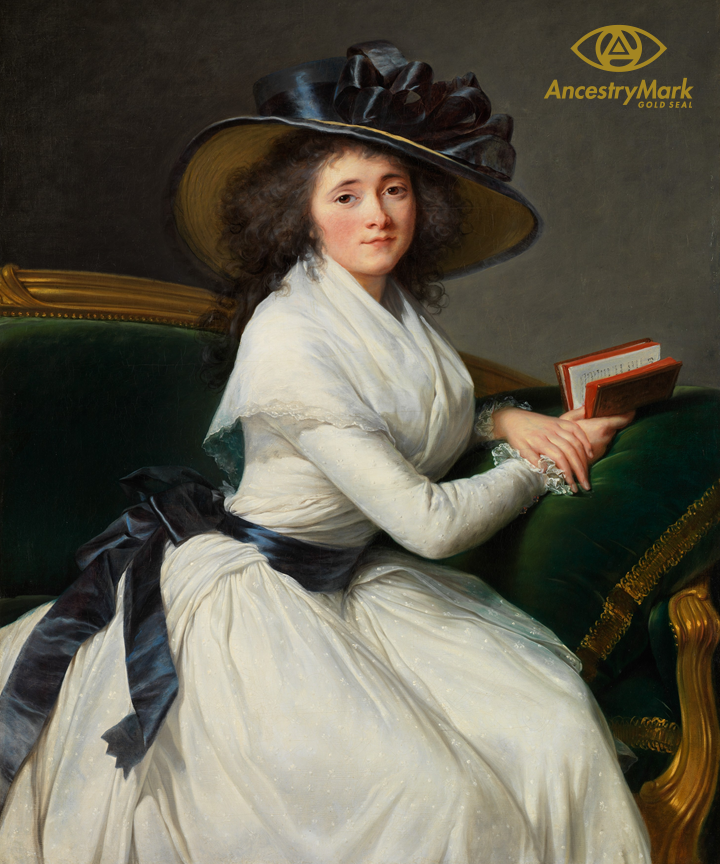
-
Building Trust
The certification of a creator's affidavit boosts consumer trust by applying the social psychological principle that authenticity significantly enhances value perception. -
Market Differentiation
The distinctive Ancestry Mark differentiates authentic creations from AI-generated works, using marketing principles to highlight the uniqueness of the brand. -
Upholding Integrity
Making legal declarations helps creators adhere to ethical standards and reduces the likelihood of disputes, reflecting the importance of integrity in both creative and legal practices. -
Boosting Visibility
Using the Ancestry Mark in marketing increases work visibility and market appeal, supported by marketing insights on brand differentiation and consumer engagement. -
Community Engagement
Joining a community that values genuine creativity fosters networking and collaboration, reflecting social psychology's views on the importance of social identity in creative domains. -
Enhancing Consumer Confidence
Verifying creators’ affidavits and showcasing their direct involvement reduces information asymmetry, directly lifting consumer confidence based on economic principles. -
Capturing Attention
By clearly distinguishing from AI-generated content, works stand out to those seeking originality, tapping into economic theories on consumer decision-making under uncertainty. -
Reducing Legal Risks
Creators' legal affirmations decrease the likelihood of authenticity disputes, offering a protective framework grounded in contract law and risk management principles. -
Increasing Product Appeal
Promotional use of the Ancestry Mark and listing in directories leverage marketing tactics to improve visibility and consumer recall. -
Encouraging Collaboration
Promoting exchange and collaboration within a valued community meets psychological needs for belonging, fostering a vibrant ecosystem ripe for innovation. -
Advocating for Transparency
The pledge to transparency in creative processes reinforces industry ethical standards, echoing ethical theories on the significance of openness and accountability. -
Expanding Market Reach
The certification mark unlocks new promotional and sales channels, drawing on economic strategies for exploring market niches and expanding brand reach. -
Boosting Visibility and Presence
Being associated with the Ancestry Mark can improve online visibility and search engine optimization for creators’ websites and portfolios, as the mark’s recognition grows and becomes a searchable term associated with quality and authenticity. -
Enhancing Intellectual Property Protection
By certifying the affidavit of the creative process, the Ancestry Mark provides an additional layer of intellectual property protection, demonstrating a commitment to safeguarding original ideas and designs. -
Supporting Authentic Storytelling
The Ancestry Mark enables creators to tell the authentic story behind their work, appealing to consumers who value transparency and the narrative of creation, which can enhance emotional connections and brand loyalty. -
Attracting Premium Clients and Patrons
The mark signals a high standard of originality and authenticity, attracting clients and patrons who are willing to pay a premium for works that carry such a certification, thereby potentially increasing revenue for creators. -
Providing a Competitive Edge
In markets saturated with both human and AI-generated works, the Ancestry Mark gives creators a competitive edge by certifying the human creativity and thought process behind their work, distinguishing them in the marketplace. -
Cultural Capital
Associating with the Ancestry Mark can increase a brand's cultural capital by aligning with values of authenticity, creativity, and innovation, enhancing its standing and influence within cultural and creative communities.
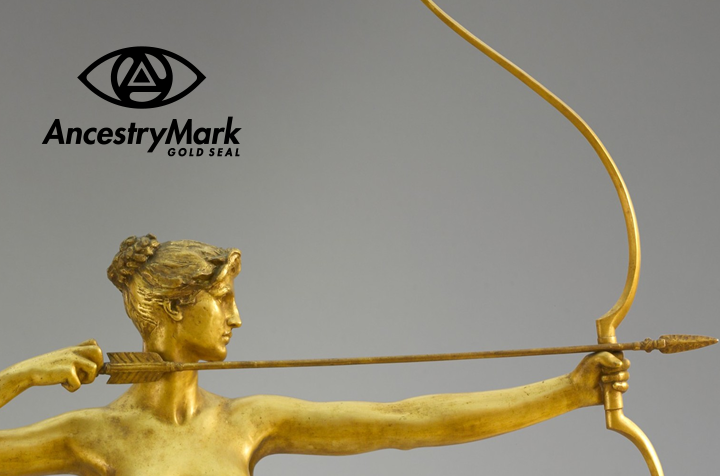
Ancestry Mark FAQ
1. What is the Ancestry Mark Certification?
The Ancestry Mark is a certification program that authenticates the affidavits of creators, focusing on their declarations regarding the originality and authenticity of their work, especially in relation to sentient creativity and the use of AI. It does not certify the work itself but the creator's statements about their work.
2. Who can apply for the Ancestry Mark?
Designers, artists, architects, and any creators, including humans and sentient non-human intelligences are eligible to apply. The program values creativity from all sentient beings capable of creative expression.
3. How do I apply for the Ancestry Mark?
Begin by creating a profile on the A' Design Awards platform, submit your design with images and descriptions, answer a yes/no questionnaire, submit an affidavit attesting to your creative process, and upload the signed document for review.
4. What is the difference between the Ancestry Mark and the Ancestry Mark Gold Seal?
The standard Ancestry Mark certifies that a creator’s work meets the program's criteria based on their affidavit, including any use of AI. The Ancestry Mark Gold Seal is awarded to works declared to have been created entirely without AI-generated content or tools.
5. What happens if my application is rejected?
If your application is rejected, you will receive specific feedback on areas for improvement or clarification. You can revise and resubmit your application based on this feedback.
6. How long does the certification process take?
The review process can vary but typically takes up to 3 weeks from submission to final decision. Expedited review options may be available on request.
7. Are there any fees associated with the Ancestry Mark Certification?
Yes, there is a one-time application fee, except for A' Design Award winning works, for which the application fee is waived as part of the A' Design Prize. Additional certifications can be obtained using Prestige Tokens for laureates.
8. Can I use the Ancestry Mark logo once certified?
Yes, certified creators receive a legal license to use the Ancestry Mark logo and a suite of promotional tools, including a unique QR code and certification document, to highlight their work's authenticity.
9. What if I need to update my certified work?
For significant updates that might affect the basis of your certification, please contact the Ancestry Mark program to discuss possible recertification.
10. Can the Ancestry Mark be revoked?
Yes, the Ancestry Mark can be revoked if it's discovered that the creator provided misleading information or falsely declared their use of AI and adherence to the program's guidelines.
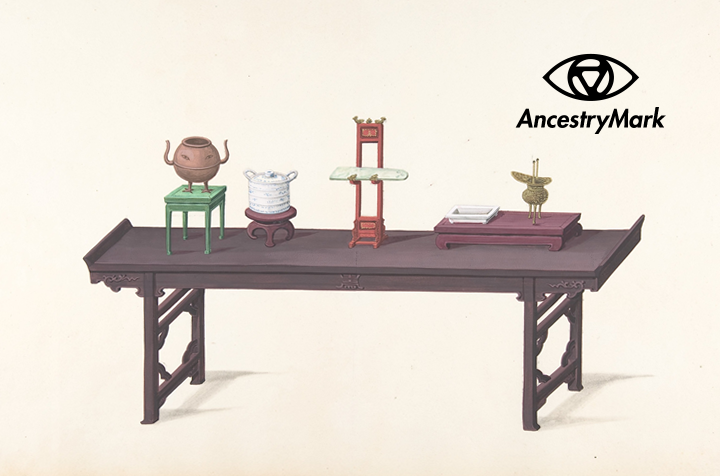
Eligible Creations for Ancestry Mark Certification
Below is a list of categories that are eligible for Ancestry Mark certification. However, it's important to note that essentially any created work can be certified, encompassing a wide array of creative fields beyond those listed.
-
Digital Art: Given its creation on digital platforms and the prevalence of AI models trained on digital artworks, distinguishing AI-generated art from human-created digital art can be challenging, making it a prime candidate for certification.
-
Photography: With AI's ability to generate realistic images, certifying the sentient creativity behind a photograph ensures its authenticity, especially in fine art photography where the vision of the photographer is crucial.
-
Videography: Similar to photography, the creative process behind videography, including direction, editing, and production, involves significant sentient decision-making, warranting certification to affirm its human origin.
-
Paintings: Traditional painting techniques are inherently sentient but could be emulated by AI. Certification reaffirms the human touch, technique, and creativity behind the work.
-
Sculpture: Sculpture requires hands-on, physical manipulation of materials, reflecting direct human involvement and creativity, making it an important area for certification.
-
Ceramics: Like sculpture, ceramics involve a tactile, physical creation process, where the artist's direct interaction with materials is key to the work's authenticity.
-
Graphic Design: In the realm of commercial and digital art, distinguishing human creative process from AI-generated designs is essential, especially for branding, logos, and visual communication.
-
Illustration: Hand-drawn or digitally created illustrations can embody a unique personal style and creativity, making the certification of their human origin valuable.
-
Fashion Design: The conceptual and physical creation of fashion items involves extensive sentient creativity and personal style, distinguishing it from potential AI-generated designs.
-
Architecture: While often supported by computer-aided design tools, the conceptualization and design process in architecture are deeply human-centric, involving complex decision-making that merits certification.
-
Music Composition: Although AI can generate music, the human composition process, involving emotion, creativity, and technical skill, stands out as distinctly sentient, suitable for certification.
-
Literature and Poetry: The nuanced expression, creativity, and emotional depth in writing and poetry are uniquely human attributes, deserving recognition and certification of their authenticity.
-
Performance Art: Live performances, theater, dance, and performance art rely heavily on human creativity, expression, and interaction, distinguishing them from AI-generated content.
-
Interactive Media: The design and creation of interactive media, including video games and web design, involve complex creative and technical skills, largely attributed to human intelligence and creativity.
-
Digital Art: Given its creation on digital platforms and the prevalence of AI models trained on digital artworks, distinguishing AI-generated art from human-created digital art can be challenging, making it a prime candidate for certification.
-
Photography: With AI's ability to generate realistic images, certifying the sentient creativity behind a photograph ensures its authenticity, especially in fine art photography where the vision of the photographer is crucial.
-
Videography: Similar to photography, the creative process behind videography, including direction, editing, and production, involves significant sentient decision-making, warranting certification to affirm its human origin.
-
Paintings: Traditional painting techniques are inherently sentient but could be emulated by AI. Certification reaffirms the human touch, technique, and creativity behind the work.
-
Sculpture: Sculpture requires hands-on, physical manipulation of materials, reflecting direct human involvement and creativity, making it an important area for certification.
-
Ceramics: Like sculpture, ceramics involve a tactile, physical creation process, where the artist's direct interaction with materials is key to the work's authenticity.
-
Graphic Design: In the realm of commercial and digital art, distinguishing human creative process from AI-generated designs is essential, especially for branding, logos, and visual communication.
-
Illustration: Hand-drawn or digitally created illustrations can embody a unique personal style and creativity, making the certification of their human origin valuable.
-
Fashion Design: The conceptual and physical creation of fashion items involves extensive sentient creativity and personal style, distinguishing it from potential AI-generated designs.
-
Architecture: While often supported by computer-aided design tools, the conceptualization and design process in architecture are deeply human-centric, involving complex decision-making that merits certification.
-
Music Composition: Although AI can generate music, the human composition process, involving emotion, creativity, and technical skill, stands out as distinctly sentient, suitable for certification.
-
Literature and Poetry: The nuanced expression, creativity, and emotional depth in writing and poetry are uniquely human attributes, deserving recognition and certification of their authenticity.
-
Performance Art: Live performances, theater, dance, and performance art rely heavily on human creativity, expression, and interaction, distinguishing them from AI-generated content.
-
Interactive Media: The design and creation of interactive media, including video games and web design, involve complex creative and technical skills, largely attributed to human intelligence and creativity.
-
Interactive Art: Works that require viewer participation to complete the experience, emphasizing the interactive relationship between the creation and its audience, driven by human conceptualization and design.
-
Fashion Design: From haute couture to ready-to-wear, fashion design involves a deep understanding of form, function, and aesthetics, all of which are deeply rooted in human creativity and cultural understanding.
-
Architectural Design and Models: The process of designing buildings, spaces, and environments, where human creativity, functionality, and aesthetic considerations come together to shape our physical world.
-
Performance Art: Live art that is conceptual and performed by artists, where the presence and intention of the human body are central to the work.
-
Botanical Art: Art that involves the depiction of plants and botanical subjects, where accuracy, aesthetic appeal, and the artist's interpretation play a significant role.
-
Folk Art and Traditional Crafts: Works that are deeply rooted in cultural heritage, tradition, and community, reflecting human skill, tradition, and storytelling.
-
Literary Works: Including poetry, novels, short stories, and scripts, where the depth of human thought, narrative skill, and linguistic creativity are paramount.
-
Music Composition and Performance: Human-created music, including both the composition of new works and the performance of existing pieces, where emotion, skill, and creativity are expressed through sound.
-
Dance Choreography: The art of designing sequences of movements in which motion, form, or both are specified, showcasing the human capacity for expression through movement.
-
Street Art and Graffiti: Public art forms that often involve social commentary or aesthetic expression within urban environments, highlighting individual artists' skills and messages.
-
Documentary Filmmaking: The creation of films that document reality for the purposes of instruction, education, or maintaining a historical record, often driven by a strong human perspective and narrative.
-
Art Therapy Projects: Creative works produced in therapeutic contexts, where the process of creation is as significant as the final product, emphasizing the human aspects of healing and expression.
-
Ethnographic and Cultural Documentation: Visual, written, or multimedia works that document cultural practices, rituals, and traditions, requiring a deep, empathetic understanding of human societies.
-
Furniture Design: The process of creating functional and aesthetic pieces of furniture where human ingenuity, ergonomics, and material expertise come together.
-
Interior Design: The art and science of enhancing the interior of a space to achieve a healthier and more aesthetically pleasing environment for the people using the space, requiring a deep understanding of human behavior, aesthetics, and spatial harmony.
-
Architecture: Beyond architectural design and models, this encompasses the comprehensive planning, designing, and constructing buildings and structures, reflecting human creativity, cultural significance, and functional requirements.
-
Jewelry Design: The creation of wearable art that combines craftsmanship, precious materials, and artistic vision, often reflecting personal or cultural symbolism.
-
Vehicle Design: Including the conceptualization and development of the aesthetics and ergonomics of vehicles, emphasizing functionality, safety, and brand identity.
-
Car Design: A specialized area of vehicle design focusing specifically on the development of the appearance, and to some extent the ergonomics, of motor vehicles.
-
Yacht Design: The specialized art of planning and designing water vessels that balance luxury, efficiency, sea-worthiness, and aesthetics.
-
Landscape Design: The art of arranging or modifying the features of a landscape, an urban area, etc., for aesthetic or practical reasons, requiring a blend of artistry, environmental science, and horticultural knowledge.
-
Web Design: The process of creating websites, involving webpage layout, content production, and graphic design, where usability, aesthetics, and user experience are paramount.
-
Music Instrument Design: The craft of creating musical instruments, where acoustics, material science, and musical theory meet craftsmanship and design aesthetics.
-
Luxury Design: Designing products, services, or experiences that convey luxury, exclusivity, and high quality, requiring a deep understanding of aesthetics, craftsmanship, and consumer desires.
The list above is not exhaustive; Ancestry Mark certification is open to all creations, artifacts, products, services, and experiences. Regardless of the field or medium, all forms of creation and production are eligible to apply for certification, emphasizing our commitment to recognizing and certifying the authenticity and originality of a diverse range of creative works.
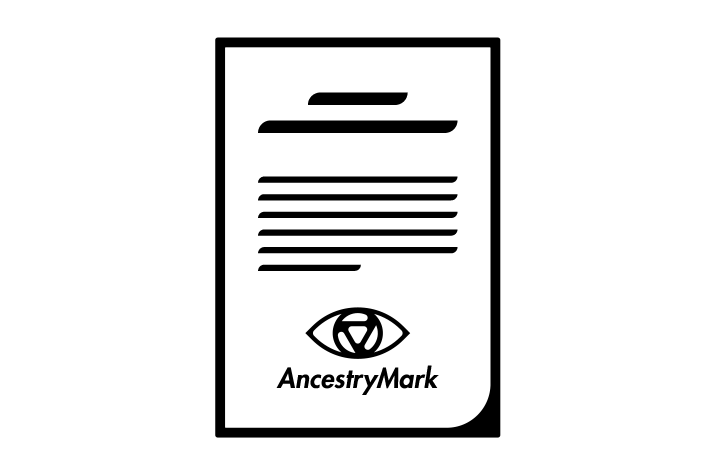
The Ancestry Mark is a certification program that records and assesses the legal affidavits of creators regarding their creative processes and the use of AI in their work. It signifies that a creator's declarations meet established criteria, highlighting a commitment to transparent, sentient involvement in the creative process. The Ancestry Mark certification does not directly validate the authenticity of the work itself but certifies that the creator's statements about their work comply with the program's standards, acknowledging the evolving role of generative AI in creative endeavors. For our context, the term sentient refers to the ability to perceive or feel things and requires a presence of consciousness or self-awareness, having the capacity to experience sensations such as compassion, wisdom, generosity, gratitude, forgiveness, justice, altruism, love, honour, pleasure, happiness, bravery, sadness or comparable emotions and/or states. Within this scope and context, Ancestry Mark is open to certify creations of humans as well as any other sentient non-human intelligence, including but not limited to AI as well as other lifeforms or sentient entities. You should also understand that when you apply for an Ancestry Mark, please note that your work's main image will be exposed to the public during the verification stage. This visibility applies even to works categorized as Concealed and to those that do not win the A' Design Award. Typically, both winning and non-winning works in Concealed Categories remain private. However, applying for an Ancestry Mark changes this, making your work publicly visible. If your work requires strict confidentiality, like patent-pending projects, consider carefully before applying for an Ancestry Mark, as it will compromise your work's privacy during verification.
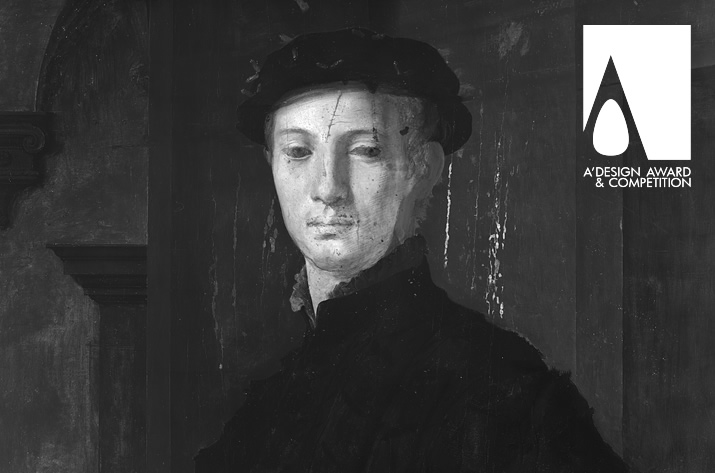
The A' Design Award's coveted A' Design Prize includes Ancestry Mark Affidavit Certification together with many other benefits designed to recognize and honor your creations.


